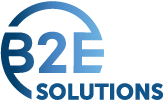When hiring new employees, employers have many different reporting and verification obligations they need to understand. Among these are New Hire Reporting, Social Security Number Verification Service (SSNVS) and E-Verify. While each serves a distinct purpose, understanding their differences and requirements is crucial for maintaining a compliant and efficient hiring process. Let’s explore what each item entails, how they differ and their respective requirements.
What is New Hire reporting?
New Hire reporting is a federal and state requirement that mandates employers to report information about newly hired or rehired employees to a designated state agency. The state will then forward new hire information that’s required to the federal government through the National Directory of New Hires. This practice allows government agencies to locate parents who owe child support, prevent fraudulent unemployment claims, identify potential recipients of public assistance and more.
Key features:
- Mandatory: All US employers must comply with this reporting requirement, regardless of the size of their business.
- Deadlines: Employers typically must report new hires within 20 days of the hire date. Some states may have shorter time frames.
- Report information: Federal law requires employers to report the employee’s name, address, Social Security number and hire date, along with the employer's name, address and Federal Employer Identification Number (FEIN). Some states may require additional data.
- How to report: Employers may submit new hire information through their designated state’s new hire reporting website, secured email, first class mail, fax, interactive telephone systems, magnetic tape or other electronic media. Determining an employer’s designated state depends on if the organization is a single or multistate employer.
Don't want to deal with New Hire reporting?
Check with your human capital management (HCM) solution provider to see if they offer New Hire reporting services. At. B2E Solutions, we'll pull and submit required New Hire reporting on your behalf. To learn more or to request this service, reach out to us today.
What is the Social Security Number Verification Service?
The Social Security Number Verification Service (SSNVS) is an online service offered by the Social Security Administration (SSA). This service allows employers to verify that employee names and Social Security numbers match according to the Social Security department’s records. In other words, it tells an employer if the employee’s name matches the Social Security number they provided.
Employers should utilize the SSNVS before preparing and submitting an employee’s Form W-2. Making sure an employee’s name matches the Social Security number they provided on their Form W-2 is important. Unmatched records can result in additional processing costs for employers and uncredited earnings for employees (which can affect future eligibility and amounts paid under retirement, disability and other programs).
Key features:
- Not required: SSNVS is not a mandatory service, but is highly recommended for maintaining accurate employee records and ensuring compliance with wage reporting requirements.
- Bulk verification: Employers can verify up to 10 names and Social Security numbers online in real-time, or up to 250,000 names and numbers overnight through electronic file submission.
- Payroll focus: SSNVS ensures the accuracy of Social Security numbers for payroll and wage reporting purposes. It does not indicate if an employee is authorized to work in the United States.
What is E-Verify?
A person may have a valid Social Security number, but not be authorized to work in the United States. That’s where E-Verify comes in. E-Verify is an internet-based system that allows employers to electronically verify an employee’s eligibility to work in the country by comparing the information on an employee’s Form I-9 to records available through the US Department of Homeland Security (DHS) and the Social Security Administration (SSA).
Key features:
- Only required in some cases: While many employers choose to require E-Verify as part of their internal processes, it is not universally mandated by law. That said, E-Verify is mandatory for federal contractors and in certain states. Employers should check their state regulations to determine if E-Verify is required for them.
- Quick and accurate: E-Verify compares employee information to millions of government records and typically returns verification results within as little as three to five seconds.
- Integrations: E-Verify integrates with certain HR systems (like UKG Ready) to make it faster, easier and more seamless for employers to utilize this government service as part of their internal processes and workflows. To learn more about the E-Verify/UKG Ready integration, click here.
What is E-Verify+?
Later this year, the US government plans to launch a new E-Verify service called E-Verify+. This new service will not replace E-Verify. Rather, it will work together with E-Verify to deliver a more integrated I-9 and E-Verify process.
Most notably, E-Verify+ will remove much of the burden from employers. Employees will enter their own I-9 information directly into the system and verification communications will come directly from E-Verify (not the employer). Furthermore, employees won’t need to go through the whole verification process again and again with subsequent employers. The new offering will allow employees to save their information in their E-Verify+ account to be used with future employers who participate in the E-Verify+ program.
For more information on E-Verify+, click here.
A side by side comparison

A well-oiled HR operation
New Hire reporting, SSNVS and E-Verify each play vital roles in HR and compliance. While New Hire reporting is a mandatory process for all employers, SSNVS and E-Verify offer additional verification tools to ensure the accuracy and legality of employment records. By understanding and appropriately utilizing three resources, employers can maintain compliance, prevent fraud and support more efficient HR operations.
To learn how B2E Solutions can help you with these goals, contact us today.










